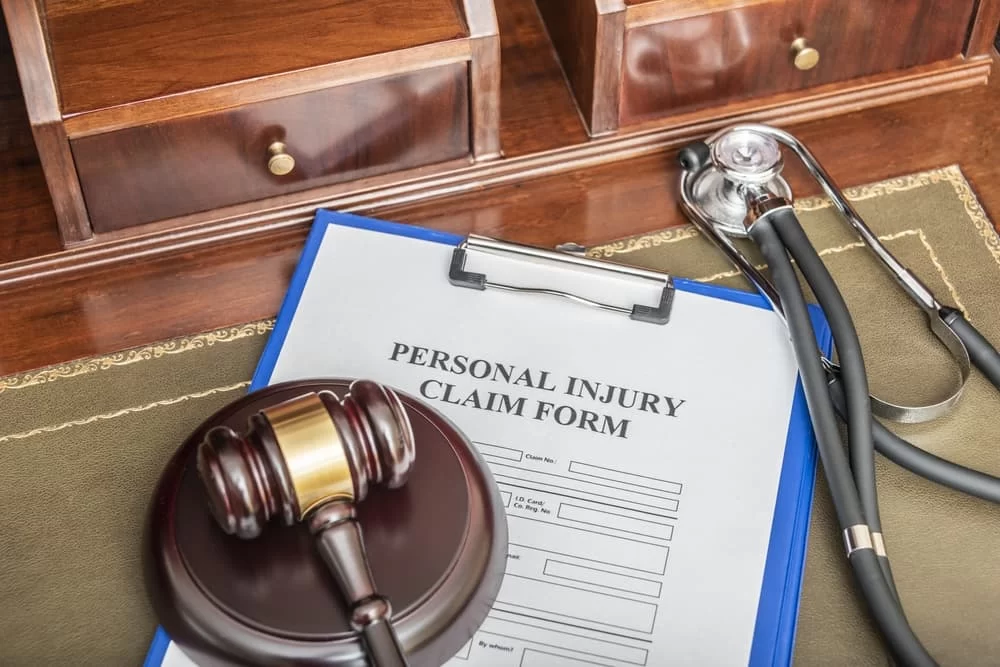
How to File a Personal Injury Lawsuit in the United States
If you've been injured in an accident due to someone else's negligence, the idea of filing a personal injury lawsuit may seem overwhelming. You’re dealing with physical pain, emotional stress, and potentially mounting medical bills. It’s easy to feel lost in the process, but the good news is that the legal system is designed to help you. In this article, I’ll walk you through the steps of filing a personal injury lawsuit in the United States and what you can expect along the way. Hopefully, by the end of this, you’ll feel more confident and informed about taking action to protect your rights.
1. Understanding Personal Injury Law
Personal injury law exists to protect people who have been harmed by others' careless or intentional actions. This can include car accidents, slip-and-fall incidents, medical malpractice, defective products, or even workplace injuries. The purpose of a personal injury lawsuit is to seek compensation for damages, including medical bills, lost wages, pain and suffering, and other related costs.
As someone who has been through this process, I can tell you that it’s essential to understand that not every injury case will result in a lawsuit. Many personal injury cases settle before they ever make it to court. Settlements can happen quickly and avoid the hassle of a trial, but sometimes, if the insurance company isn’t willing to offer a fair settlement, litigation becomes necessary. If you find yourself in a situation where you need to file a lawsuit, here’s a comprehensive guide on how to do so.
2. Seeking Medical Attention
The first and most important step after an injury is to seek medical attention. Not only is this essential for your health and well-being, but it also helps build a record of your injury. Insurance companies and courts need to see that you’ve received treatment in a timely manner to understand the severity of your injury. Your doctor’s medical records will play a crucial role in your case.
In my case, after a car accident, I went to the emergency room right away. I didn’t feel like I was severely injured at the time, but the doctor told me to come back for follow-up visits. This was crucial. Even though the pain wasn’t immediately unbearable, it got worse over time, and I was able to show that I took my injury seriously. These medical visits created a documented record that would help my case later on.
3. Gathering Evidence and Documentation
Before you even think about filing a lawsuit, it’s vital to gather as much evidence as possible. This will help support your claims when presenting the case to an insurance company or court. Evidence can include:
- Photos of the accident scene and your injuries
- Eyewitness testimonies
- Police reports or accident reports
- Medical records
- Repair estimates for damaged property
- Work records showing lost wages
When I was in my accident, I took pictures of my car, the intersection where the accident happened, and even the street signs. The more information you have, the better your chances are of building a solid case. If you’re unable to gather some of this evidence right away, don’t worry – your lawyer can help you with this process. But the earlier you start, the better.
4. Finding the Right Personal Injury Lawyer
One of the most important decisions you’ll make in this process is choosing the right lawyer. The lawyer you hire will guide you through the entire lawsuit, from filing the complaint to negotiating a settlement or representing you in court. It’s crucial to find a lawyer with experience in personal injury law and a proven track record.
When I was looking for a lawyer, I knew I needed someone who specialized in the type of injury I had sustained. I did my research, read reviews, and interviewed a few lawyers before I made my choice. You’ll want someone who is not only knowledgeable but also someone you can trust to represent your best interests. A good lawyer will handle negotiations with insurance companies, ensuring that you get the compensation you deserve.
5. Filing the Lawsuit
If settlement negotiations fail and you decide to move forward with a lawsuit, the next step is to file a complaint in the appropriate court. This document will outline your injury, the responsible party, and the damages you’re seeking. Once filed, the defendant will have an opportunity to respond.
At this point, you’ll begin the discovery process. This is when both parties exchange information and evidence related to the case. Your lawyer may request documents, take depositions (sworn statements under oath), and even interview witnesses to build a stronger case.
6. The Litigation Process
Litigation can be lengthy, and it’s important to be prepared for the process. The discovery phase might take several months, and depending on the complexity of the case, it could take longer. Once all evidence is gathered, your case might go to trial. However, many personal injury cases settle before trial. The goal during this phase is to reach an agreement that compensates you fairly without needing a trial.
I personally didn’t expect my case to take so long. It was months before my lawyer and I reached a settlement. Even though it felt like the process was dragging, I was constantly updated by my lawyer about the status. It’s easy to get frustrated, but you must be patient. Settlements can take time, but a fair outcome is worth the wait.
7. Settlement vs. Trial
At some point during the litigation process, you may be offered a settlement. The defendant’s insurance company may offer a sum of money to avoid going to trial. This can be a great option if you want a guaranteed payout without the risks and uncertainty of a trial. However, if the settlement offer doesn’t cover your medical expenses or pain and suffering, you may want to proceed with the trial.
In my experience, a settlement offer came right before trial. It was a substantial amount, but after discussing it with my lawyer, I felt it wasn’t enough to cover all my future medical needs and lost wages. We rejected the offer and went to trial, which ultimately resulted in a much larger settlement in my favor. It’s essential to have a lawyer who can guide you on whether accepting a settlement is the right decision for your case.
8. Receiving Compensation
If your case is successful, you will receive compensation for your injuries. This may cover medical bills, lost wages, emotional distress, and pain and suffering. Depending on the circumstances, you may also be awarded punitive damages, which are meant to punish the defendant for particularly reckless or malicious behavior.
After my case was settled, I received compensation that helped cover my medical bills and pain. It wasn’t an easy journey, but the relief of having my expenses covered allowed me to focus on healing and moving forward with my life.
9. What to Expect During the Lawsuit Process
Throughout the entire personal injury lawsuit process, it’s important to stay organized, patient, and persistent. Your lawyer will handle the bulk of the legal work, but you’ll need to stay involved. Keep track of your medical treatments, work absences, and any other changes to your condition that could affect your case. You’ll also want to communicate regularly with your lawyer about updates or questions.
And remember, while a lawsuit can be a lengthy and often stressful process, the goal is to ensure you get the compensation you deserve. By filing a personal injury lawsuit, you’re not only seeking justice for yourself but also ensuring that those responsible for your injury are held accountable.
10. Conclusion: Protecting Your Rights
Filing a personal injury lawsuit can be a complicated and emotionally draining process, but with the right knowledge, support, and legal help, it’s possible to get through it and receive the compensation you deserve. I hope this article has provided you with a clear understanding of how to navigate the personal injury lawsuit process and has given you the confidence to take the necessary steps to protect your rights. If you need help finding the right lawyer or have any questions about your case, don’t hesitate to contact a law firm like ESPLawyers, who can guide you through this journey.
Remember, your health and well-being come first. Always consult with a qualified attorney to ensure your case is handled correctly and that you get the compensation you deserve.
SEO Title: How to File a Personal Injury Lawsuit in the United States
SEO Keywords: Personal injury lawsuit, injury claim, personal injury lawyer, legal advice, compensation for injury, car accident lawsuit, medical malpractice claim
SEO Description: Learn how to file a personal injury lawsuit in the U.S. step by step. This guide covers seeking medical attention, gathering evidence, finding the right lawyer, and what to expect during the litigation process.








